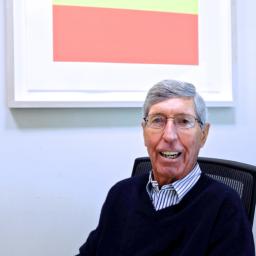 An abstract of a study released by the US Centers for Disease Control and Prevention
An abstract of a study released by the US Centers for Disease Control and Prevention found that the study's "2010 [Autism Spectrum Disorder] prevalence estimate of 14.7 per 1,000 (95% CI = 14.3-15.1), or one in 68 children aged 8 years, was 29% higher than the preceding estimate of 11.3 per 1,000 (95% CI = 11.0-11.7), or one in 88 children aged 8 years in 2008." Of the sites surveyed, four counties in New Jersey had the highest prevalence estimate, with 21.9 per 1,000 (95% CI = 20.4-23.6).
National Public Radio quotes CDC experts that
"skyrocketing estimates don't necessarily mean that kids are more likely to have autism now than they were 10 years ago." "It may be that we're getting better at identifying autism," says , director of the CDC's National Center on Birth Defects and Developmental Disabilities.
Researchers say intervention in early childhood may help the developing brain compensate by rewiring to work around the trouble spots.
Another abstract of a "small, explorative study" from
The New England Journal of Medicine describes Patches of Disorganization in the Neocortex of Children with Autism and suggests "a probable dysregulation of layer formation and layer-specific neuronal differentiation at prenatal developmental stages." CBS News
demystifies the study as "brain abnormalities may begin in utero." Cross-submitted by the author at Soylent News.
There's a generation of now mostly-retired folks who had the fortune of living through the amazing technological changes that saw the world go digital, the Internet go mainstream, and networking become the conversation not of niche technical specialists but teenagers with smartphones. Bill Krause is one of them. He was a sales engineer in 1967, mentored by none other than
Bill Hewlett of Hewlett Packard. Along the way in his interesting career, he saw the rise of Ethernet, became the CEO of 3COM, and rubbed shoulders with giants. Now, in a fascinating interview,
Bill Krause tells the story of those magnificent decades : the age of 40 pound calculators, his $100 billion mistake, and the early days of the computer revolution.
Like this nugget, for example, about the beginning of 3COM:
No sooner had I started at the company when I get a call from this guy in Seattle. It was Bill Gates. He and Paul Allen were our first customers... Our second customer was a young guy in Cupertino by the name of Steve Jobs. And our third customer was [Sun Microsystems cofounder] Andy Bechtolsheim.
Or this one: 3Com introduced Ethernet Thinnet (CATV-style) cabling, which moved the transceiver electronics onto a PC adapter board to make Ethernet practical for an office. You'd think Steve Jobs would be impressed by the demo, but instead, Krause say Jobs told him and Bob Metcalfe, "Who's the brain-dead a****** that came up with this s***? This is dreck, this is crap. You want to make it easy to install, just plug it into the telephone jack for cryin' out loud."
This Bill Krause interview is just a starting point: if you're hungry for more, there's more on the history of Xerox PARC, 3Com and the PC networking industry
at the History of Computer Communications site.Surgeons at the UPMC Presbyterian Hospital in Pittsburgh, Pennsylvania, will try to save the lives of patients with knife or gunshot wounds by
placing them in suspended animation , buying time to fix injuries that would otherwise be lethal to them.
The technique involves replacing all of a patient's blood with a cold saline solution, which rapidly cools the body and stops almost all cellular activity. At lower temperatures, cells need less oxygen because all chemical reactions slow down. This explains why people who fall into icy lakes can sometimes be revived more than half an hour after they have stopped breathing.
 An abstract of a study released by the US Centers for Disease Control and Prevention found that the study's "2010 [Autism Spectrum Disorder] prevalence estimate of 14.7 per 1,000 (95% CI = 14.3-15.1), or one in 68 children aged 8 years, was 29% higher than the preceding estimate of 11.3 per 1,000 (95% CI = 11.0-11.7), or one in 88 children aged 8 years in 2008." Of the sites surveyed, four counties in New Jersey had the highest prevalence estimate, with 21.9 per 1,000 (95% CI = 20.4-23.6).
An abstract of a study released by the US Centers for Disease Control and Prevention found that the study's "2010 [Autism Spectrum Disorder] prevalence estimate of 14.7 per 1,000 (95% CI = 14.3-15.1), or one in 68 children aged 8 years, was 29% higher than the preceding estimate of 11.3 per 1,000 (95% CI = 11.0-11.7), or one in 88 children aged 8 years in 2008." Of the sites surveyed, four counties in New Jersey had the highest prevalence estimate, with 21.9 per 1,000 (95% CI = 20.4-23.6).